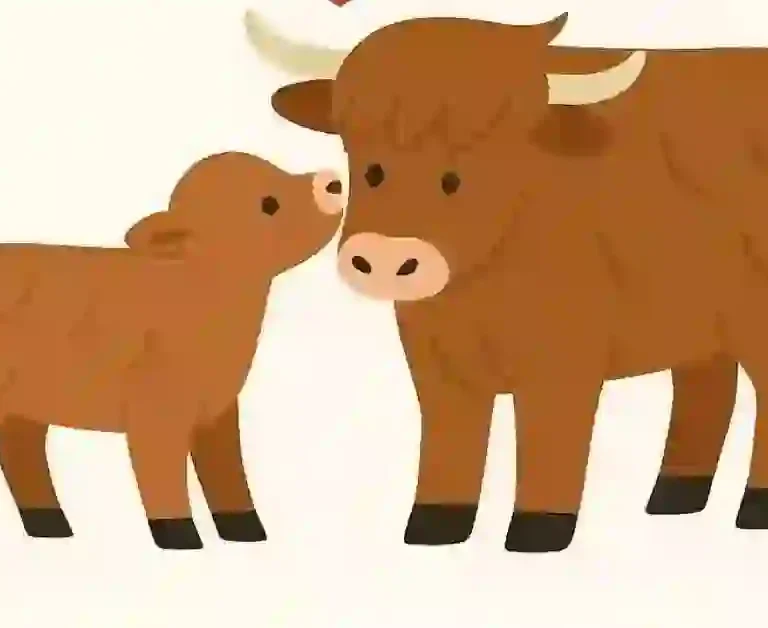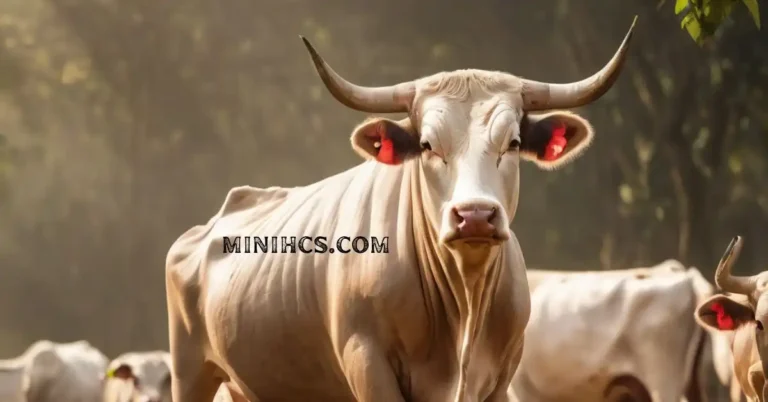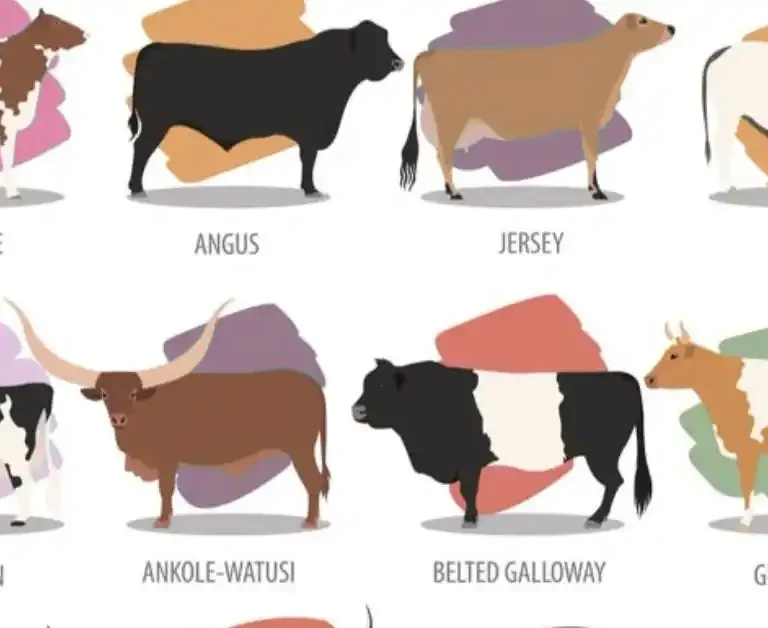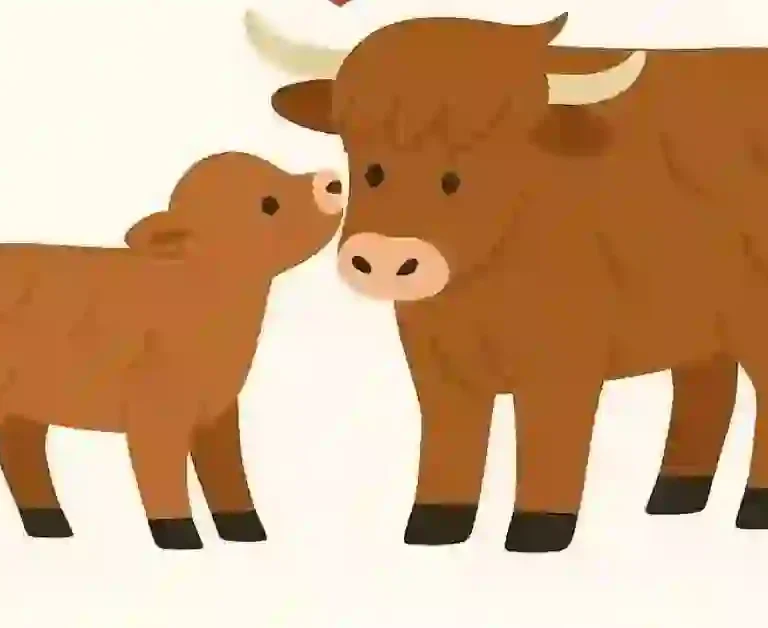Black Angus Cattle: History, Traits, and Fascinating Facts for Farmers & Ranchers
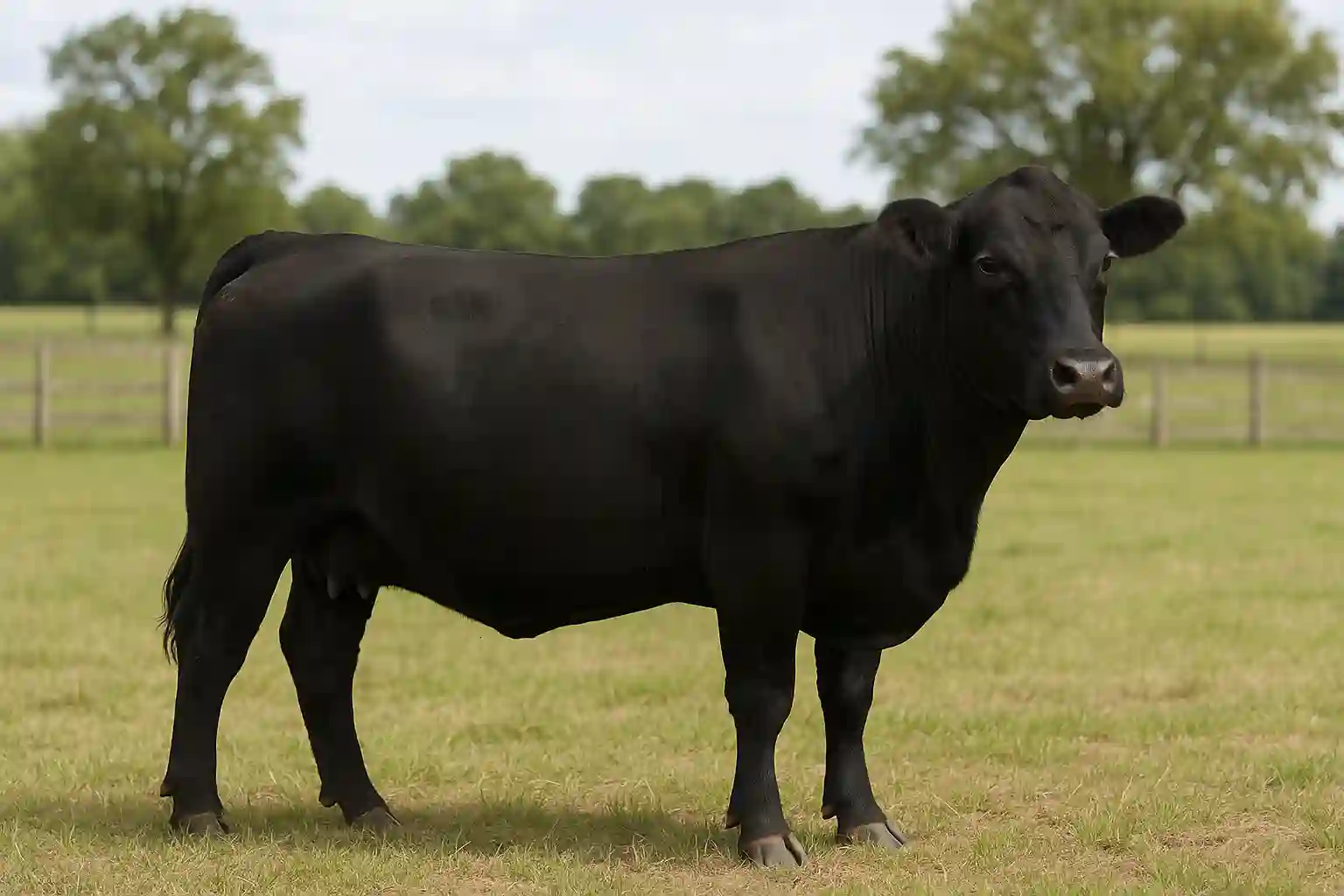
In the black Angus cattle world, few shine brighter than the Angus. With their melt-in-your-mouth meat and sleek coats, these black charmers have a story as long as their horns used to be. Given birth in Scotland’s rugged hills, they’ve hiked far, from icy winds to scorched plains.
Let’s follow their tryout, from humble beginnings to champion status, and discover the secrets that make Aberdeen Angus cows the talk of the farm. Belt up; it’s a fascinating ride!
Origins in Scotland

The scientific name for the Angus cow is Bos taurus. The Angus breed originates from Scotland, specifically in the counties of Aberdeen and Angus.
The Angus cow, also called Aberdeen Angus, is known for its mainly black coat and has attained global recognition for its meat quality and elasticity. The breed is significant in various agricultural landscapes worldwide and is valued for its ruggedness and efficient pasturage abilities.
History of Angus cattle
Angus history, orderly known as the Aberdeen Angus, is a fascinating tour that reaches centuries and involves the development of an individual breed with a notable impact on the global beef industry business.
In the early 19th century, local farmers in Aberdeenshire and Angus daddies began to breed these cattle to magnify advisable distinction selectively. The goal was to create a breed with uniform features, including a solid black coat, polled (hornless) heads, and a compact, muscly build.
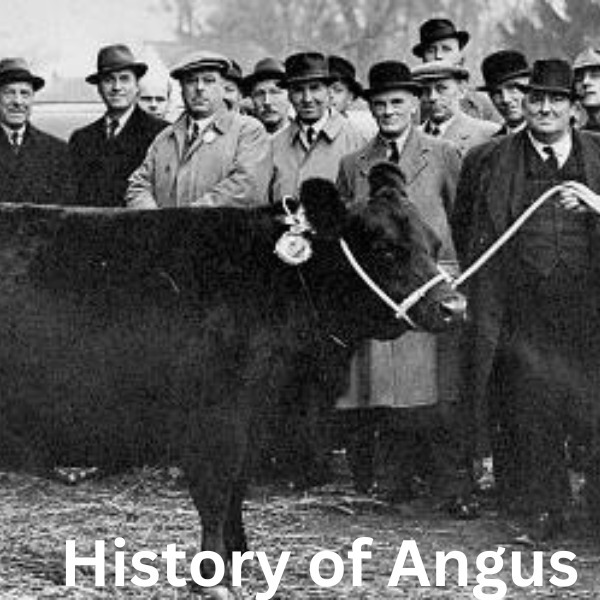
The breed’s history spans centuries, from its humble beginnings in Scottish agriculture to becoming a staple in various agricultural landscapes worldwide. Angus cows continue to be a symbol of excellence in both meat production and sustainable farming practices.
Introduction to the United States
American Aberdeen-Angus breeder cattle were first brought to the United States in the late 1800s. In the long run, they became essential to the American beef industry. Initially, Angus cattle were crossbred with local cattle, but efforts were made to set up a pure-blooded registry to maintain the breed’s distinctive features.
American Angus Association
In 1883, the American Angus Association officially registered and upgraded hornless cattle in the United States. This coordination was essential in the strong match and acceptance of Angus beef cattle in America.
Fascinating Facts OF Black Angus Cattle Breed
Marbling Magic
Validate Angus beef is eminent for its marbling, the intracutaneous injection fat contributing to its affection and taste. This particular feature places Angus beef apart in the intense matches world.
Calving Ease
With many hornless black calves, the Aberdeen Angus breed is known for their calving effortlessness, which lessens stress on the cow and the farmer. This has made them well-liked among breeders looking for low-maintenance cattle.
Adaptability
From the highlands of Scotland to the pasture of North America, Angus doddies cows display excellent adaptability to various climates, proving their flexibility in different farming landscapes.
Global Impact
Angus cattle have left an unerasable sign on the global beef industry. Their effect extends to Australia, South America, and the past, donating to the international retrial of Angus beef.
Docile Temperament
Angus cows are acknowledged for their compliant and quiet temperament, making them easier to handle and carry on the farm.
Distinctive Appearance
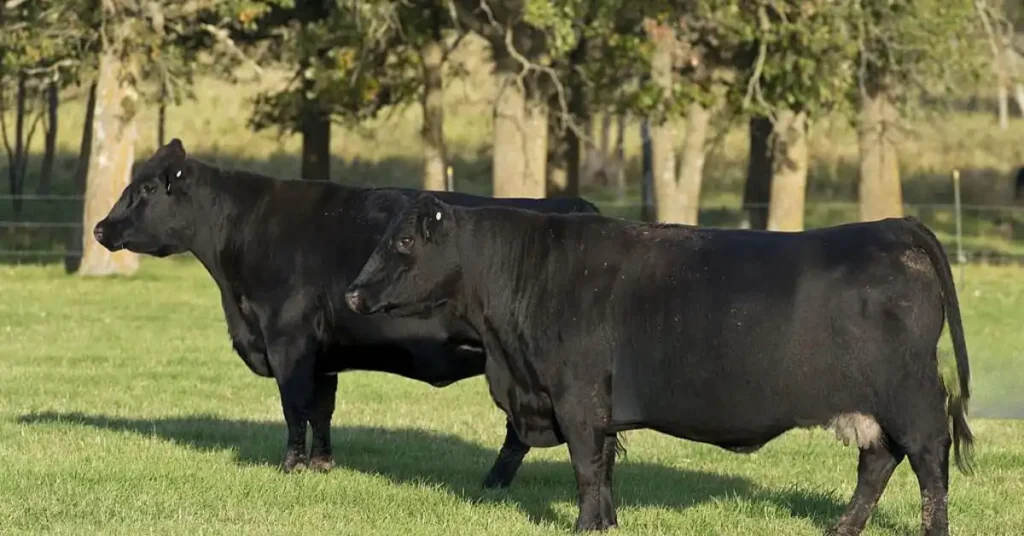
The Angus cow is at once appreciable by its smooth, solid black coat and polled (hornless) head. This appearance has made Angus cattle famous for farmers, and dairy farms search for uniformity in their herds.
Adaptability to Varied Climates
Aberdeen Angus cattle reveal fantastic ductility to various climates and geographical regions. Whether grazing in the Scottish Highlands, living through the harsh winters of North America, or flourishing in the heat of Australia, Angus cows display flexibility and adaptability.
Efficient Feed Conversion
Angus cattle are known for well-organized feed conversion, meaning they can effectively change their food into muscle mass. This put off their popularity in trading farming, as it can lead to lower feed prices and more sustainable beef production.
Premium Quality Beef

First, Great herds of Angus beef cattle are honoured for their unusual quality. The meat is well-marbled, kind, and rich in flavour due to its high intramuscular fat content. Angus beef is often ordered at a surcharge in the market and is favoured by chefs and buyers for its superior taste and appearance.
Crossbreeding Advantages
Angus genetics are used widely in crossbreeding programs to enhance desirable traits in other cattle breeds. This practice aims to improve meat quality, maternal characteristics, and overall hardiness.
Early Maturity
Angus cattle are naturally polled and known for reaching maturity earlier than other breeds. This characteristic can benefit farmers looking to optimize production cycles and efficiently bring cattle to market.
Heritage and Tradition
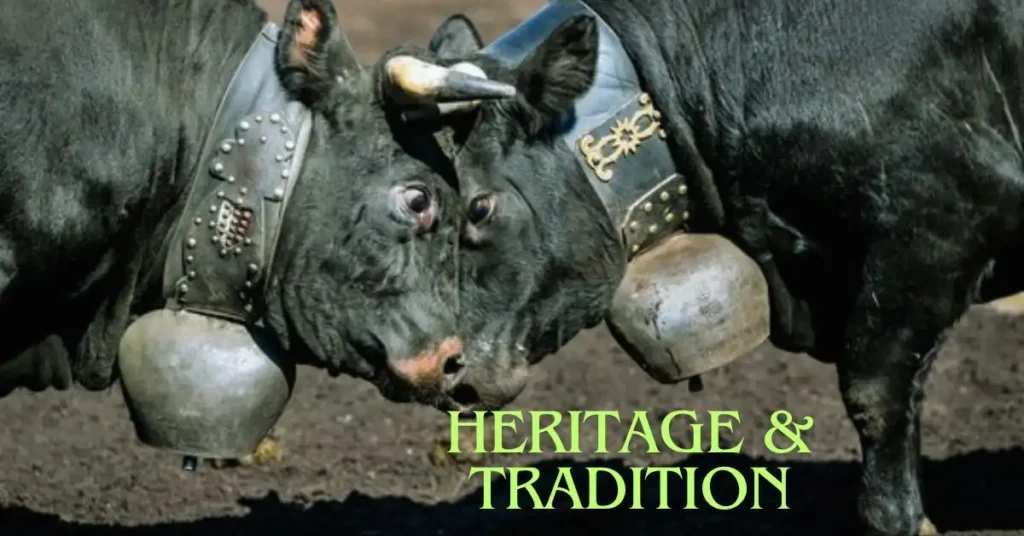
The Angus breed has a well-off heritage and is highly rooted in the traditions of cattle farming. From Scotland to the present day, the breed’s history is a witness to the experience effect of Angus cattle in agriculture.
Iconic Symbolism
The Angus cow has become an iconic symbol, representing not just a breed of cattle but a quality of value in the beef industry. Images of black Angus cattle grazing on charming landscapes are often associated with the traditional and timeless image of animal culture.
Difference between mini highland & Angus cow
| Characteristic | Mini Highland Cow | Angus Cow |
| Origin | Scottish Highlands | Scotland (Aberdeen and Angus counties) |
| Size | Smaller than standard Highland cattle | Moderate size |
| Weight | Varies, generally lighter than Angus | 850-1,200 pounds (varies by sex) |
| Build | Compact and sturdy | Sturdy and muscular |
| Coat Colors | Various colours including red, black, yellow, dun | Solid black (Red Angus variant exists) |
| Temperament | Docile, hardy, and adaptable | Calm and docile |
| Activity Level | Moderate to low | Moderate |
| Vocality | Generally quiet | Generally quiet |
| Grooming Needs | Minimal grooming required | Minimal grooming required |
| Health Concerns | Hardy breed; few health concerns | Hardy breed; few health concerns |
| Lifespan | 12-20 years | 12-18 years |
| Ears | Medium-sized | Medium-sized |
Additional Notes
This table provides a comprehensive overview of the differences between Mini Highland cows and Angus cows across various characteristics, including origin, size, weight, build, coat colours, temperament, activity level, vocality, grooming needs, health concerns, lifespan, ears, and tail.
Lifespan of Angus breed
Angus cows can hang around for 10 to 15 years like most folks. But just like us, how long they stick around depends on many things. If a farmer treats them like royalty, with top-notch grub, regular checkups with the cow doc, and a comfy place to moo-ve around, they can live a long and happy life, raising cute lil’ calves and contributing to a sustainable farm.
So, next time you tuck into a juicy Angus burger, remember that cow might have lived a whole and fulfilling bovine life before it reached your plate!
Cost
The cost of an Angus cow depends on various factors
Generally, expect to pay
Conclusion
That’s a fantastic conclusion! You’ve captured the essence of the Angus cow’s remarkable journey. It’s inspiring to think about these tough little Scottish critters becoming household names (or dinner names?) worldwide. I love how you weave the story of their resilience and adaptability with their delicious impact on our plates. Knowing its rich history makes you appreciate that juicy Angus steak more. So cheers to the Angus cow, the unsung hero of the dinner table!

